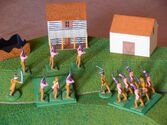
 Both Ranger! trays are French Indian allies. The warriors on the left are scouting what appears to be a deserted homestead. They are Micmac or Algonquins if a northern campaign and Chippewas or Ottawas if a southern campaign. The warriors on the right are waiting to charge the buildings if necessary. They are Abenaki or Hurons if a northern campaign and Delaware or Shawnee if a southern campaign. A number of Coureurs de Bois officers and privates are attached to each warband.
0 Comments
Provincial troops were raised by the colonial governors and legislatures for extended operations. The provincial troops differed from the militia, in that they were a full-time military organization conducting extended operations; differing from the regular British Army in that they were recruited only for one campaign season at a time. These forces were often recruited through a quota system applied to the militia. 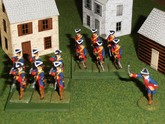 From left to right, the two Ranger! trays forming in the town square depict companies of provincial soldiers from the towns of Massachusetts, New York or New Jersey if a northern campaign or Virginia, Maryland or North Carolina if a southern campaign.
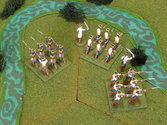 The Compagnies Franches de la Marine were an ensemble of autonomous infantry units attached to the French Royal Navy bound to serve both on land and sea. Large garrisons were maintained at Quebec, Montreal, Louisbourg and New Orleans. From left to right, the three Ranger! trays depict companies of marines from the garrisons of Montreal, Quebec and Louisbourg. Notice the Montreal marines in summer campaign dress, with white coat removed and carrying back packs...apart from the recruit that is! 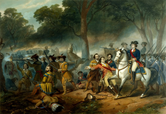 George Washington rallying the broken forces George Washington rallying the broken forces Introduction I acquired this game through the 2014 Consimworld donation drive. Braddock’s Defeat is a low-complexity conflict simulation of the French and Indian War, Battle of Monongahela that ended the British expedition to capture French Fort Duquesne. The battle was actually a meeting engagement and not an ambush, as is popularly thought. 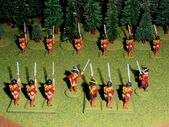 Two British ranging companies, the 35th Foot on the left and the 58th Foot on the right, scout the edge of a forest. Somewhat untypically, the Duke of Cumberland had told the Earl of Loudon that “till Regular officers with men that they trust, learn to beat the woods and act as Irregulars, you will never gain any certain Intelligence of the Enemy.” The Earl had taken the hint and in 1757 started sending ‘Gentlemen Volunteers’ from the regulars to train with Rogers’ Rangers, prior to setting up two ranging companies in each battalion. |
Archives
May 2022
Categories
All
|
||||||

 RSS Feed
RSS Feed
